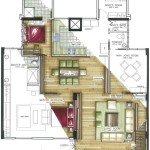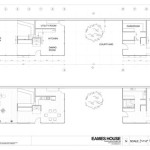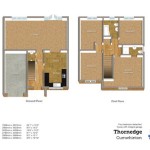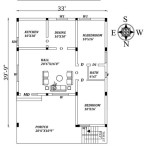Essential Aspects of Architecture Kerala House Plans
Kerala, renowned for its scenic beauty and rich cultural heritage, offers unique architectural designs epitomized by traditional Kerala house plans. These plans embody a harmonious blend of functionality, aesthetics, and environmental sustainability, creating stunning living spaces that reflect the essence of the region.
1. Traditional Elements: Classic Kerala house plans incorporate traditional elements such as sloping roofs with wide eaves, known as
"Chuttu Verandah"
, providing ample shade and protection from the tropical climate."Naalukettu"
and"Ettukettu"
houses, with their courtyards and symmetrical layouts, are iconic examples.2. Natural Materials: Kerala architecture heavily emphasizes the use of natural materials, particularly
laterite stone
,red clay tiles
, andhardwood
. Laterite blocks create durable walls, while clay tiles offer excellent insulation and a distinctive aesthetic. Hardwood beams and frames lend structural integrity and an earthy charm.3. Ventilation and Lighting: Kerala house plans prioritize natural ventilation and lighting, fostering a comfortable indoor environment. Large
"Sit-outs"
and"Courtyards"
promote cross-ventilation, allowing fresh air to circulate. Extensive"Windows"
and"Glass Doors"
maximize natural light, reducing the need for artificial lighting.4. Sustainability: Traditional Kerala architecture incorporates sustainable principles, minimizing environmental impact.
"Rainwater Harvesting Systems"
collect and store rainwater for domestic use, while"Solar Panels"
harness renewable energy. The use of natural materials and efficient ventilation reduces carbon emissions.5. Customization: Modern Kerala house plans offer the flexibility to customize designs to suit individual needs. Architects blend traditional elements with contemporary features to create unique and functional living spaces. Customization options include
"Flexible Floor Plans"
,"Modern Kitchens"
, and"Landscaped Gardens"
.6. Vastu Compliance: Vastu Shastra, an ancient Indian architectural system, influences the design of many Kerala house plans. Vastu principles guide the placement of rooms, doors, and windows to promote harmony and positive energy flow. This enhances the well-being and comfort of the occupants.
7. Embracing Tradition: While modern designs introduce new elements, traditional Kerala house plans preserve the region's architectural heritage. The use of traditional materials, such as laterite and clay tiles, ensures a sense of place and continuity. Integrating traditional motifs and artistic details adds character and authenticity.
Conclusion: Kerala house plans exemplify the seamless integration of tradition, functionality, and sustainability. By incorporating traditional elements, utilizing natural materials, promoting natural ventilation and lighting, emphasizing sustainability, allowing for customization, adhering to Vastu principles, and embracing tradition, these plans create living spaces that are both beautiful and environmentally conscious. They embody the essence of Kerala's rich cultural heritage and offer a modern interpretation of timeless architectural designs.

Best 29 Nice Pictures Kerala Architectural House Plans Design Home Floor

Architecture Kerala Plan 183 Home Design Floor Plans Delightful For House 4 Bedroom Architectures

Kerala House Plan Photos And Its Elevations Contemporary Style Elevation Traditional Plans With Floor Small

Kerala House Plans With Estimate For A 2900 Sq Ft Home Design

Beautiful 3 Bedroom House Plans Plan In Kerala Elevation Low Cost Floor Budget

3 Bedroom Kerala House Plans In 2d 3d

Best Contemporary Inspired Kerala Home Design Plans Acha Homes

Kerala Traditional 3 Bedroom House Plan With Courtyard And Harmonious Ambience Home Planners

Kerala Home Design Ton S Of Amazing And Cute Designs

Modern Architecture European Style Kerala Mix English Home Design Model Plans








